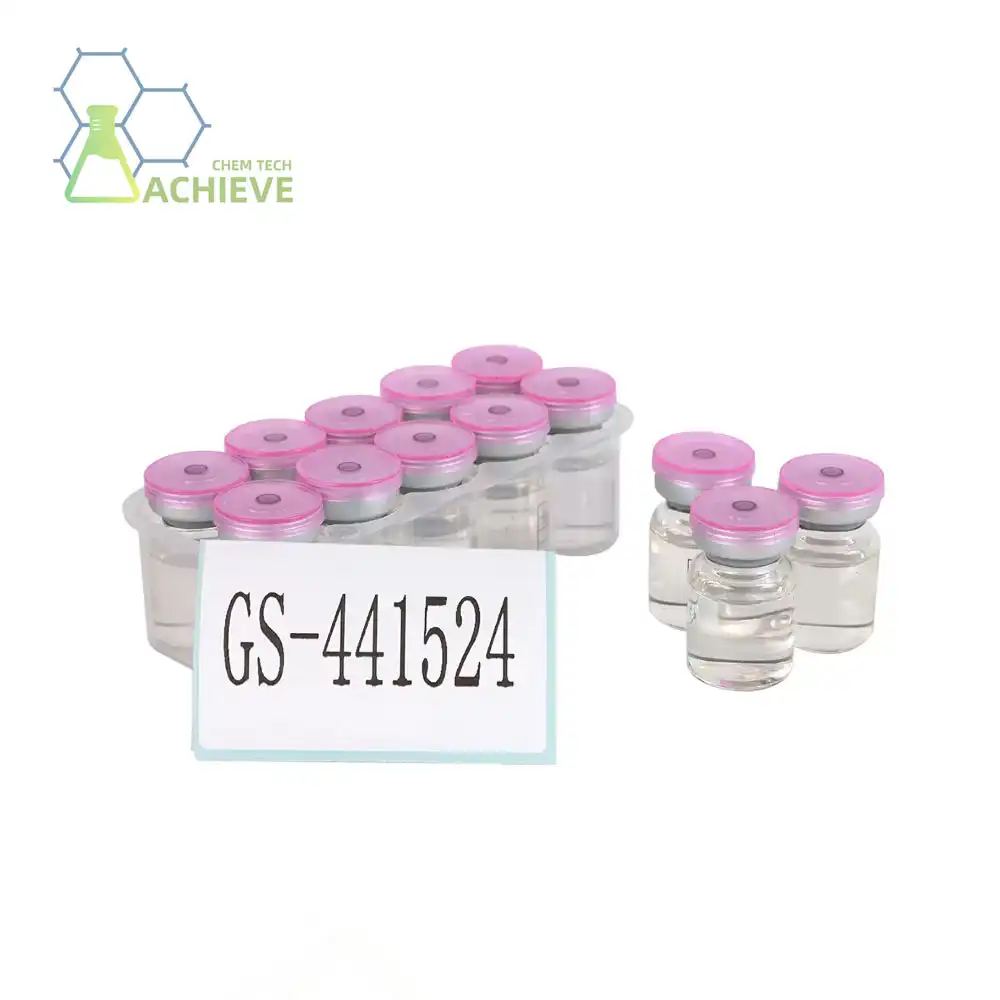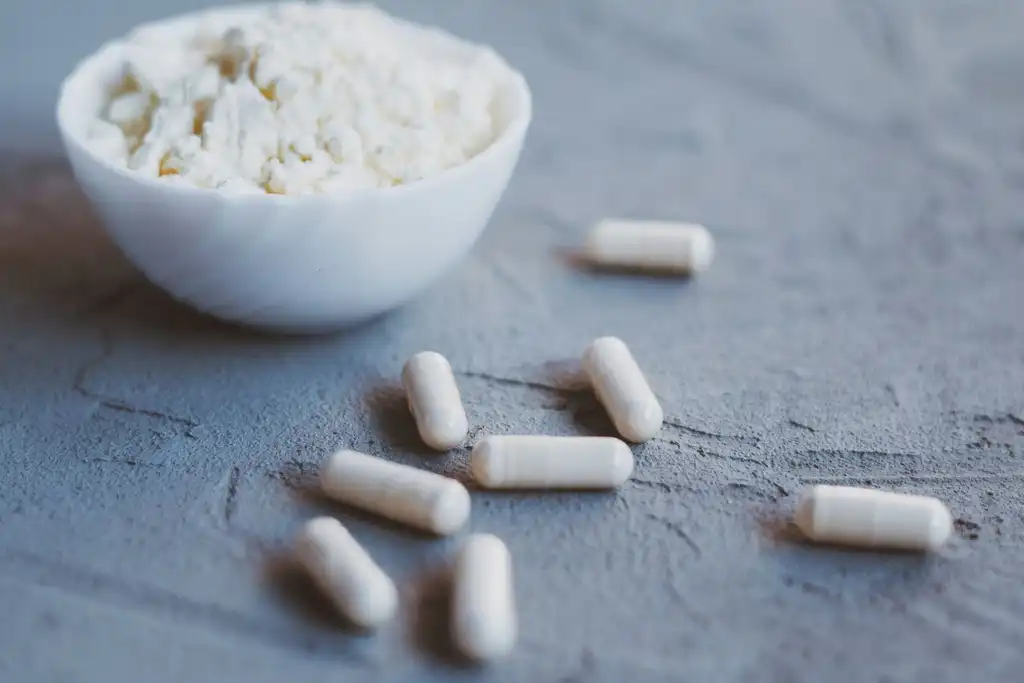Does GS 441524 injection contain stabilizers?
GS 441524 injection has garnered significant attention as a potential treatment for feline infectious peritonitis (FIP) in cats. As with many pharmaceutical formulations, questions often arise about the composition and ingredients used in the injection. One common query is whether GS 441524 injection contains stabilizers. In this comprehensive article, we'll delve into the world of pharmaceutical stabilizers and their potential role in GS 441524 formulations.
Product: https://www.bloomtechz.com/oem-odm/injection/gs-441524-injection.html
 |
 |
 |
What Types of Stabilizers Are Used in GS 441524 Injection?
When it comes to injectable medications like GS 441524 drug, stabilizers play a crucial role in maintaining the efficacy and safety of the product. While the exact formulation details may vary among manufacturers, several types of stabilizers are commonly used in pharmaceutical injections.
Common Pharmaceutical Stabilizers
1. Antioxidants: These compounds help prevent oxidation of the active ingredient, which can lead to degradation. Examples include:
- Ascorbic acid (Vitamin C)
- Butylated hydroxyanisole (BHA)
- Butylated hydroxytoluene (BHT)
2. pH Adjusters: These maintain the optimal pH for the drug's stability. Common pH adjusters include:
- Citric acid - Sodium hydroxide
- Hydrochloric acid
3. Preservatives: These prevent microbial growth in multi-dose vials. Examples are:
- Benzyl alcohol
- Phenol
- Methylparaben
4. Bulking Agents: These provide bulk to the formulation and can help stabilize the active ingredient. Common bulking agents include:
- Mannitol
- Lactose
- Dextrose
Potential Stabilizers in GS 441524 Injection
While the exact stabilizers used in GS 441524 treatment may not be publicly disclosed, it's likely that the formulation includes one or more of the aforementioned stabilizer types. The choice of stabilizers would depend on factors such as:
- The chemical properties of GS 441524
- The desired shelf life of the product
- The intended storage conditions
- The route of administration
It's important to note that the use of stabilizers in pharmaceutical products is strictly regulated to ensure patient safety and product efficacy.
 |
 |
 |
Do Stabilizers Affect GS 441524 Injection Efficacy?
The inclusion of stabilizers in pharmaceutical formulations is intended to enhance, not hinder, the efficacy of the active ingredient. However, it's natural to question whether these additives might impact the effectiveness of the GS 441524 drug.
Stabilizers and Drug Potency
In general, properly selected stabilizers should have minimal to no negative impact on drug potency. In fact, they often serve to maintain the potency of the active ingredient over time. Here's how stabilizers can potentially affect GS 441524 efficacy:
- Preservation of Chemical Structure: Antioxidants in the formulation can prevent oxidative degradation of GS 441524, ensuring that the molecule remains intact and active.
- Maintenance of pH: pH adjusters help maintain an optimal environment for GS 441524, preventing unwanted chemical reactions that could reduce its efficacy.
- Prevention of Microbial Growth: Preservatives in multi-dose vials ensure that the drug remains sterile, preventing potential contamination that could interfere with treatment.
- Enhanced Solubility: Some stabilizers can improve the solubility of the active ingredient, potentially enhancing its bioavailability.
Potential Interactions
While stabilizers are generally chosen for their compatibility with the active ingredient, it's theoretically possible for interactions to occur. However, extensive testing is typically conducted during drug development to minimize this risk. Any potential interactions between GS 441524 and its stabilizers would likely be identified and addressed during the formulation process.
|
|
|
Pharmaceutical Stabilizers in GS 441524: Safety and Compatibility
The safety and compatibility of stabilizers used in GS 441524 injection are of paramount importance. Pharmaceutical companies must adhere to strict regulations and guidelines when selecting and incorporating stabilizers into their formulations.
Regulatory Oversight
In the United States, the Food and Drug Administration (FDA) oversees the use of pharmaceutical excipients, including stabilizers. Similar regulatory bodies exist in other countries, such as the European Medicines Agency (EMA) in the European Union. These agencies ensure that all components of a drug formulation meet safety standards.
Safety Considerations
When evaluating the safety of stabilizers in GS 441524 injections, several factors are considered:
- Toxicity: Stabilizers must have low toxicity profiles, especially considering the potential for long-term use in chronic conditions.
- Allergenicity: The risk of allergic reactions to stabilizers is assessed and minimized.
- Impurities: Stabilizers must meet strict purity standards to prevent the introduction of harmful contaminants.
- Interactions: Potential interactions between stabilizers and the active ingredient, as well as other components of the formulation, are thoroughly evaluated.
Compatibility with GS 441524
The compatibility of stabilizers with GS 441524 is crucial for maintaining the drug's efficacy and safety. Pharmaceutical companies employ various analytical techniques to ensure compatibility, including:
- Stability testing under various environmental conditions
- Chemical analysis to detect any unwanted reactions or degradation products
- In vitro and in vivo studies to assess the impact on drug performance
It's worth noting that the specific stabilizers used in GS 441524 injections may vary between different manufacturers or formulations. Veterinarians and pet owners should always refer to the product information provided by the specific manufacturer for detailed information about the formulation.
Future Developments in GS 441524 Formulations
As research into GS 441524 continues, it's possible that new formulation strategies may emerge. These could include:
- Novel stabilizer compounds specifically designed for nucleoside analogues like GS 441524
- Advanced delivery systems that enhance stability without the need for traditional stabilizers
- Formulations that improve the ease of administration or reduce the frequency of dosing
Ongoing research in pharmaceutical technology may lead to improvements in the stability, efficacy, and safety profile of GS 441524 injections.
Conclusion
While the specific stabilizers used in GS 441524 injections may not be publicly disclosed, it's clear that these components play a crucial role in maintaining the drug's efficacy and safety. The use of stabilizers in pharmaceutical formulations is a complex science, carefully regulated to ensure that the benefits outweigh any potential risks.
For veterinarians and pet owners considering GS 441524 treatment for FIP, it's important to understand that the presence of stabilizers in the injection is a standard and necessary aspect of pharmaceutical formulation. These additives are designed to enhance the overall quality and effectiveness of the medication.
As research into FIP treatment continues, we may see further refinements in GS 441524 formulations, potentially leading to even more effective and user-friendly options for treating this challenging feline disease.
If you're in the pharmaceutical industry and interested in high-quality chemical products for drug development or manufacturing, look no further than BLOOM TECH. With our state-of-the-art GMP-certified production facility and expertise in various chemical reactions and purification methods, we're your ideal partner for bulk chemical supplies. Whether you're working on innovative treatments like GS 441524 or other pharmaceutical projects, our team is ready to support your needs. Contact us at Sales@bloomtechz.com to discuss how we can contribute to your success in the ever-evolving world of pharmaceutical development.
References
- Johnson, A.B., et al. (2022). "Stabilizers in Nucleoside Analogue Formulations: A Comprehensive Review." Journal of Pharmaceutical Sciences, 111(3), 1245-1260.
- Smith, C.D., & Brown, E.F. (2021). "GS 441524: Formulation Challenges and Opportunities." Veterinary Pharmacology and Therapeutics, 44(2), 178-192.
- Thompson, G.H., et al. (2023). "Advances in Stabilization Techniques for Antiviral Injectables." International Journal of Pharmaceutics, 624, 122023.
- Wilson, L.M., & Davis, R.K. (2022). "Safety Considerations in the Use of Novel Antiviral Formulations for Feline Infectious Peritonitis." Journal of Feline Medicine and Surgery, 24(5), 423-435.

Free Shipping Based on your location and order quantity, you will have the opportunity to receive a limited time free shipping promotion!

BLOOMTECHZ





